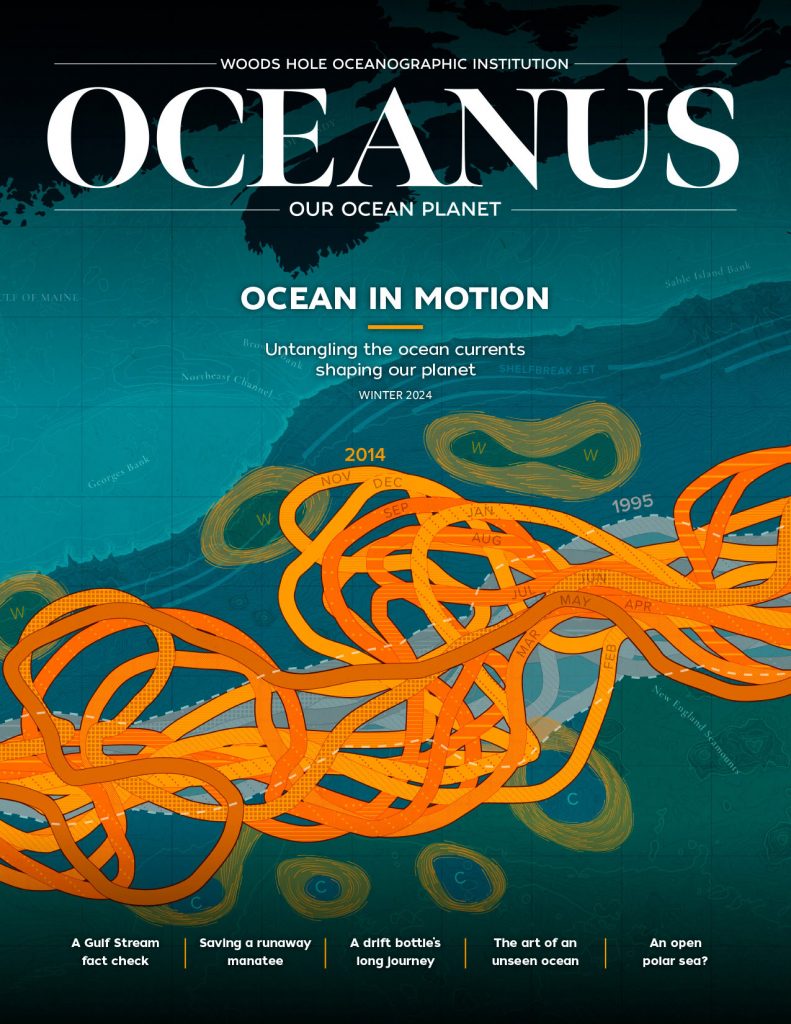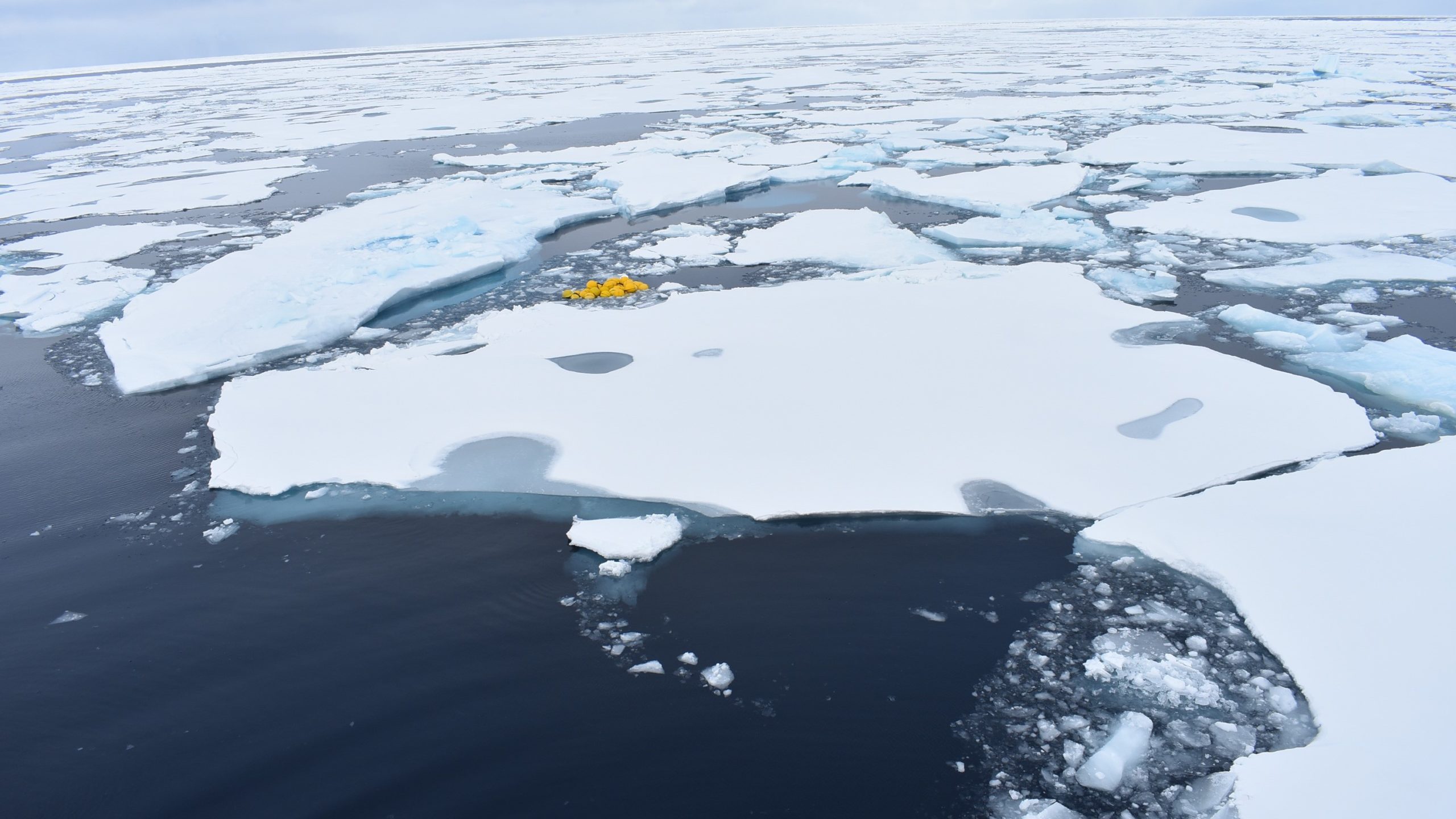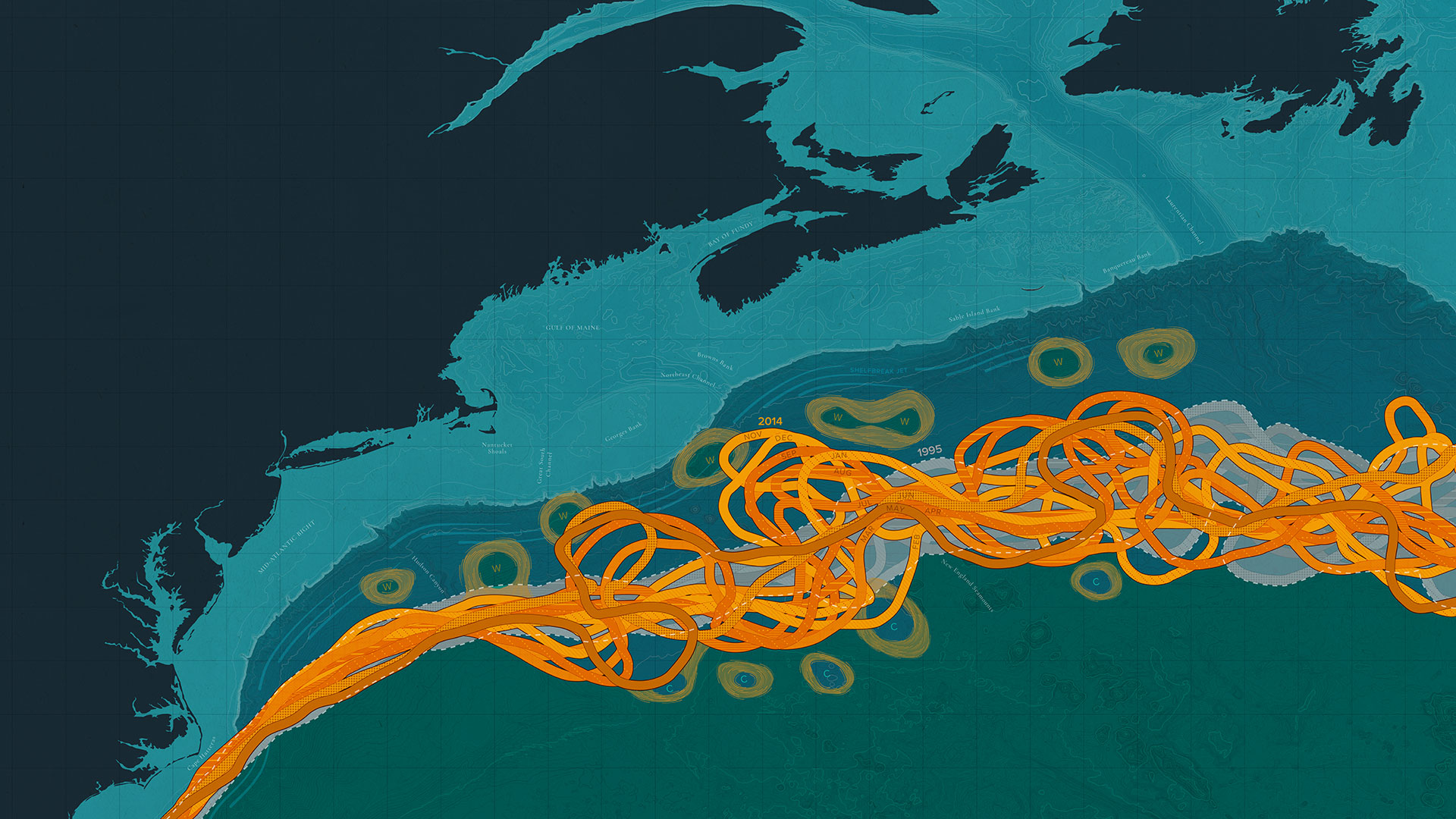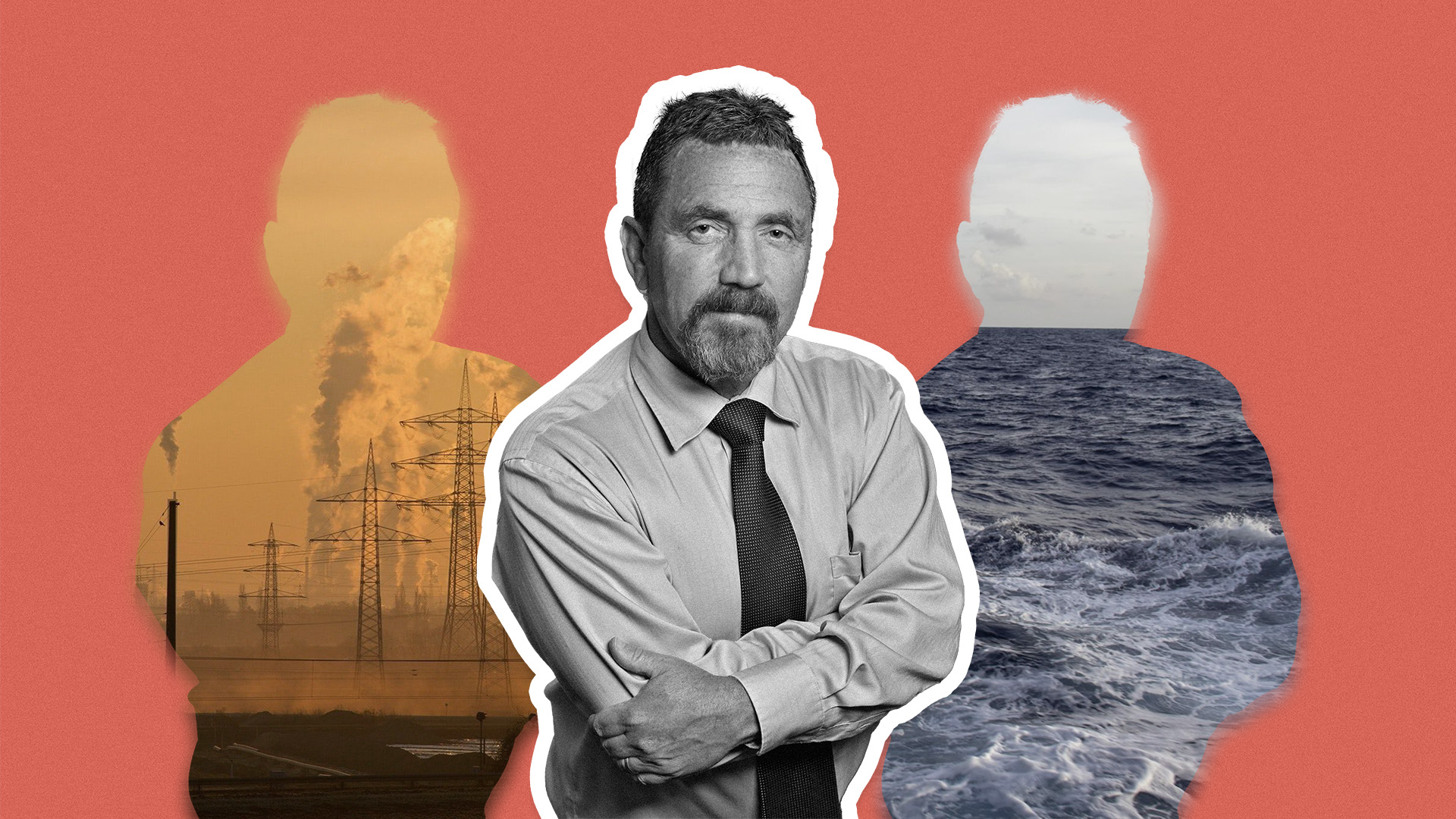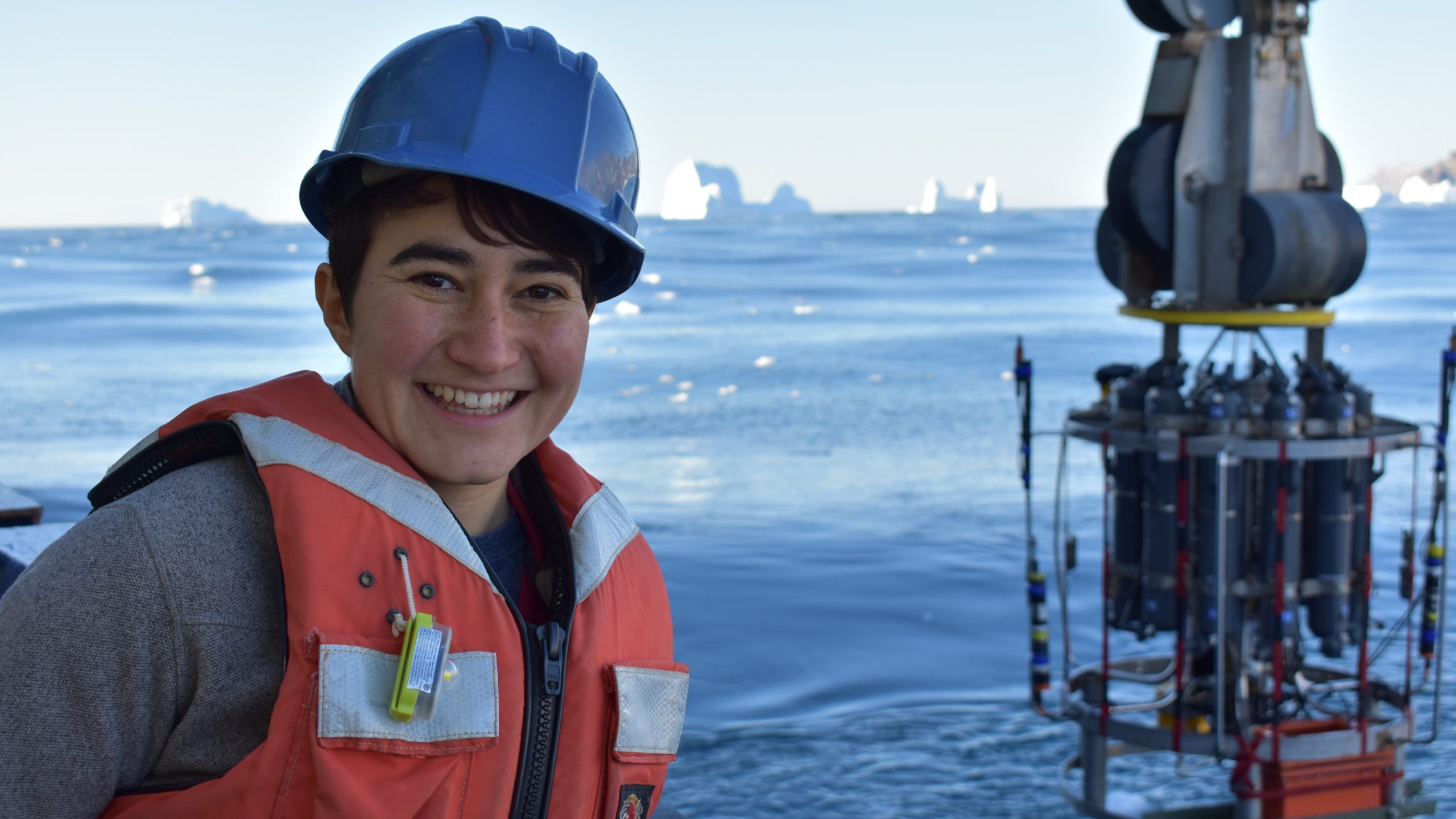
Waiting on the next freshwater flush
Could the unprecedented amounts of freshwater in the Beaufort Sea stall the current system that controls our climate? WHOI's Isabela Le Bras weighs in.
Estimated reading time: 4 minutes
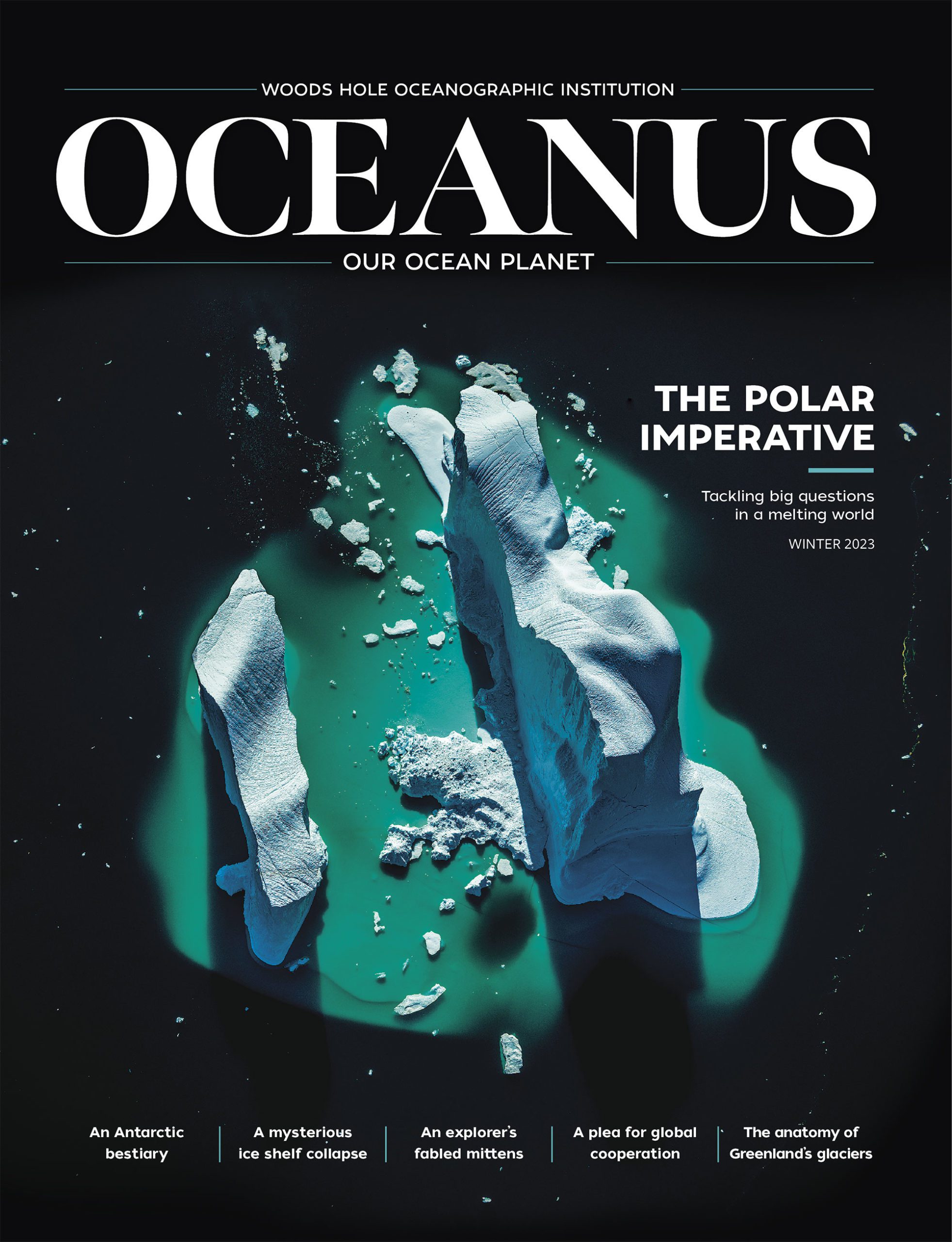 This article printed in Oceanus Winter 2023
This article printed in Oceanus Winter 2023
The Arctic, as one of the fastest changing oceans and regions on Earth, “lends an urgency to understanding it better,” including understanding the Beaufort Gyre, says WHOI physical oceanographer Isabela Le Bras, a principal investigator on the Beaufort Gyre Observing System (BGOS). The gyre is a massive clockwise ocean circulation pattern in the Arctic Ocean north of Alaska. The currents swirl around as if contained in a bowl about 1000 kilometers across, she says.
However, something is amiss with the Beaufort Gyre. It has been accumulating freshwater but it hasn’t released a significant freshwater pulse to the North Atlantic Ocean in about 20 years, far beyond its expected cycle.
Oceanus sat down with Le Bras to learn more about this unprecedented situation and learn about the possible ramifications locally and globally.
Oceanus: Why is the Beaufort Gyre important?
Le Bras: The gyre sets the ocean temperature and salinity over a large portion of the Arctic, which impacts how the ocean and atmosphere interact with each other. In turn, that influences the overall climate. The Beaufort Gyre also impacts how freshwater moves from place to place within the ocean, which can affect ocean currents across the globe.
Oceanus: How has the gyre operated in the past?
Le Bras: The gyre’s large swirling circulation has accumulated and then released freshwater to other parts of the ocean, with an approximately 5-10-year pattern going on, we think, at least since the 1930s. Previous freshwater releases in the 1970s and 1980s have been associated with short-lived freshening events in the North Atlantic.
Oceanus: What is so concerning now?
Le Bras: Since the late 1990s, the gyre has been stuck in this phase of collecting freshwater and not releasing it. It has been about 20 years now since we've seen a flip in the cycle that used to happen every 5-10 years. From 2003 to 2018, we have seen a 40% growth in freshwater in the gyre relative to the climatology in the 1970s.
We don't think this has ever happened before. We have an unprecedented amount of freshwater up there. We are not sure what is going to happen if and when this freshwater is released to the rest of the ocean. A sudden release of freshwater could shut down the Atlantic’s large-scale circulation that stabilizes our climate. This is because the Arctic freshwater would be lighter than most of the water in the subpolar North Atlantic and float atop it like oil over water. This in turn would stop or at least slow down deep-water formation which is necessary for this circulation system to overturn.
Oceanus: What are some different scenarios for the gyre?
Le Bras: The general sense is that freshwater can't accumulate in the gyre forever. In general, if you pile up water so much in one place, it forms a pressure head that is difficult to maintain. Whether the release of freshwater occurs slowly or suddenly is an open question. While a rapid release could lead to a complete shutdown of the Atlantic’s overturning circulation, a gradual release might give the system time to equilibrate, and any changes in the circulation of the climate system might not be as dramatic.
It is important for us to be observing the Arctic upstream of where this might happen, so we can have some sense for whether this change is happening slowly or rapidly, or if it's happening at all.
Oceanus: Is the Beaufort Gyre overdue for a freshwater release?
Le Bras: Absolutely. It can't keep going in the same direction forever. The climate system tends to oscillate, so we expect it to change. A caveat is that we are in a time of unprecedented climate change with a lot of step changes happening, including more melting and less refreezing of ice. We might be going to towards a new regime that is totally different than what we had in the past. We have been used to things repeating themselves, but they might not. In the last couple years, we have been seeing slightly less freshwater in the Beaufort Gyre, so it may be that the release has already started, but we can’t yet say for sure.
Oceanus: What is the Beaufort Gyre Observing System?
Le Bras: The only reason we are confident that these changes have been taking place in the gyre is because of the Beaufort Gyre Observing System (BGOS), which has been making detailed measurements of the freshwater contents of the gyre since 2003.
The BGOS allows researchers to closely monitor changes in the gyre. Most every September, with a few years missed due to Covid and funding challenges, Canadian Coast Guard icebreaker CCGS Louis S. St-Laurent travels to the gyre where researchers take extensive measurements and map where the freshwater is. It’s a collaborative effort between WHOI and the Canadian Department of Fisheries, with many international researchers participating.
Oceanus: What’s it like doing research in the gyre?
Le Bras: The Canada Basin has a beautiful huge expanse of sea ice. It's bittersweet because we know this ice is thinning and melting away. Working on the ice is an amazing experience. It’s the only time you can stand on top of the ocean. With the Arctic changing so fast, that lends urgency to understanding it better. I feel compelled to study this region that's undergoing so much change.
